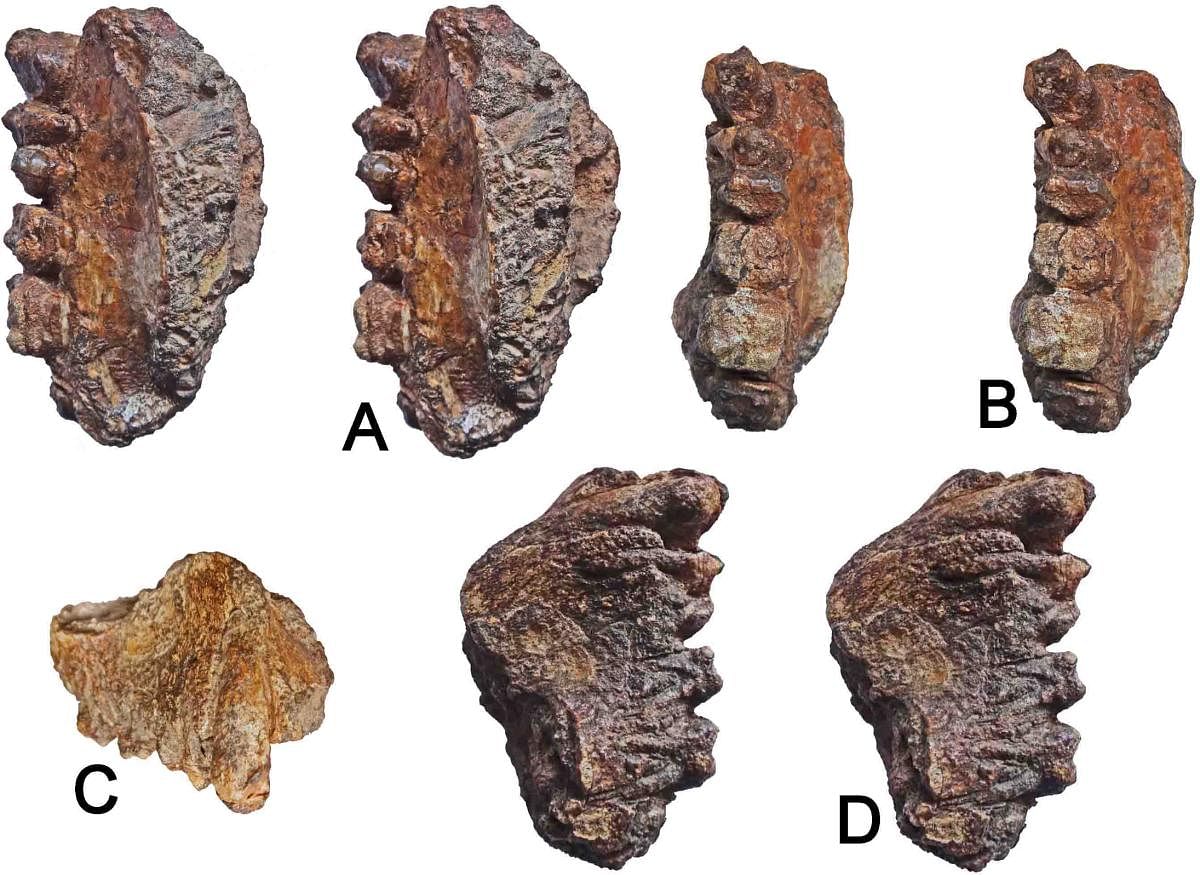11 million-yr-old fossil of extinct ape found in Kutch
Last Updated IST

Israeli military spokesman Richard Hecht said Friday "we are assuming about 15 killed in action" in Gaza
A 10.8 million-year-old fossil of an extinct ape found in the Kutch region of Gujarat opens a new window into the evolution of such creatures into the great apes and ancestral humans.
The fossilised jaw bone belonged to a species known as Sivapithecus that was earlier reported only from lower Himalayas in India, Pakistan and Nepal.
“This is the first discovery of a Sivapithecus from peninsular India, establishing the range extension for the species. This is important to understand the evolution of hominoids,” said Sunil Bajpai, a fossil hunter at the Indian Institute of Technology, Roorkee, and one of the members of the team that discovered the relic.
Apes, or hominoids, are a group of primates from Africa and Southeast Asia that includes the gibbons and the great apes: chimps, orangutans, gorillas and humans.
In the past, Sivapithecus specimens were reported from four regions in the Siwaliks: the Potwar Plateau of Pakistan, Ramnagar and Hari Talyangar in India, and the Churia Hills in Nepal. Tapar in Kutch is the first locality outside the Siwaliks where the specimen has been found.
“The ape jaw fragment was excavated from the Kutch basin in Gujarat, which is 1,000 km south of the Siwaliks deposits. This means researchers would now have one more area to look for Sivapithecus,” said another team member Brahma Nand Tiwari from the Wadia Institute of Himalayan Geology, Dehradun.
X-ray computed tomography revealed details of the preserved canine and cheek teeth, such as tooth enamel and root structure. The ape mandible belonged to an adult individual of the Sivapithecus genus, but the species could not be identified.
The authors dated the specimen to the basal Late Miocene, around 10 million years ago, based on previous mammalian fossil findings in the site.
The findings have been published in the November 14 issue of journal PLOS One.
The new specimen was unearthed by a Wadia Institute team way back in 2011. Over the last seven years, Bajpai and Tiwari collaborated with other researchers at the Birbal Sahani Institute of Paleosciences, Lucknow, Duke University at Durham and Northeastern Ohio Medical University to date the fossil and compare it with other specimens.
“In the last seven years, there were other research papers that also established the age of the location from where the specimen was found. We can now say that these ancient apes were not restricted to the Himalayas,” said Bajpai.
